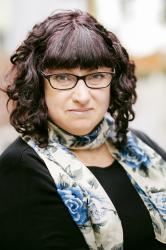Cav and Pag
Cav and Pag, the classic double bill of 1 act melodramas is always popular fare, and has been a staple of the international operatic repertoire since the first pairing in 1893.The Melbourne Opera’s latest offering of this double act is pleasant but pedestrian, and seems in need of the renovation recently afforded its venue, the aging Atheneum Theatre.
Cavalliera Rusticana & PagliacciMelbourne OperaAtheneum, Melbourne Saturday 4 September, 2010
Cav and Pag, the classic double bill of 1 act melodramas is always popular fare, and has been a staple of the international operatic repertoire since the first pairing in 1893.The Melbourne Opera’s latest offering of this double act is pleasant but pedestrian, and seems in need of the renovation recently afforded its venue, the aging Atheneum Theatre.
Cavalleria and Pagliacci are simple stories, both dealing with the tragic consequences of lust and jealousy within small peasant communities. Whilst the two stories are quite distinctive in their plots and dramatic structure, the music is similar in style – Leoncavallo was in fact inspired to write Pagliacci after the success of Cavalleria – and this production too often feels like a very long day in rural southern Italy. With costumes set in, I assume, the 1940’s or 50’s the direction strives for a naturalism that, coupled with a severely dated English translation, unfortunately emphasises the cheesier melodramatic elements of the operas.
The symbolism of the blood red floor, present throughout both operas, is lost in interpretations that are, despite the strengths of the performers, folksy and strangely devoid of passion.
The first half of the evening is taken up with Cavalleria Rusticana, with the two male principals reprising roles they previously created for Melbourne Opera. Tenor Roy Best was in his first full length operatic role when he sang Turridu in 2007, and time has certainly been on his side since then. It is a pleasure – and a relief – to see Best’s easy tenor now matched with an equally easy physicality and a growing confidence in his acting. However bass baritone Gary Rowley, previously authoritative as Alfio, this time struggles with the tessitura of the role, with a corresponding negative impact on his interpretation.
Star of the evening is soprano Danielle Calder as the abandoned and shamed Santuzza. Calder continues to impress in everything she does, and this role is no exception. Her singing has an unforced strength and clarity that she couples with intelligent and measured acting.
Pagliacci is the longer of the two pieces, and perhaps more accessible to audiences with its colourful variety of characters and the famous tenor aria “Vesti la giubba” (with the unfortunate English translation of “On with the motley”). Redeeming himself, Gary Rowley here turns on an acting tour de force with his portrayal of the scheming Tonio. He is matched by a uniformly strong cohort of principals.
As the tortured clown actor Canio, David Rogers Smith has made the jump from an extensive portfolio in music theatre to a developing career as an operatic tenor. His experience as a singing actor is a welcome addition to the opera stage, and the thrill of his top notes compensate for the bleed through of music theatre phrasing in the less strenuous passages. As his wife Nedda, soprano Kerry Gill is charming and vocally solid, and tenor Michael Lapina is eye catching as Beppe. The cast is rounded out by baritone Phillip Calcagno, who is an attractive potential romantic saviour in Silvio, but whose talents are somewhat wasted in the small role.
Under the batons of Greg Hocking (Cavalleria Rusticana) and Matthew Toogood (Pagliacci) the Melbourne Opera Orchestra’s playing is spirited and mostly accurate; and the (unpaid) Melbourne Opera Chorus performs with its usual gusto, mixing up some fine singing with their usual quota of musical hiccups and enthusiastic but under-directed acting. Until 24 September
www.ticketmaster.com.au

